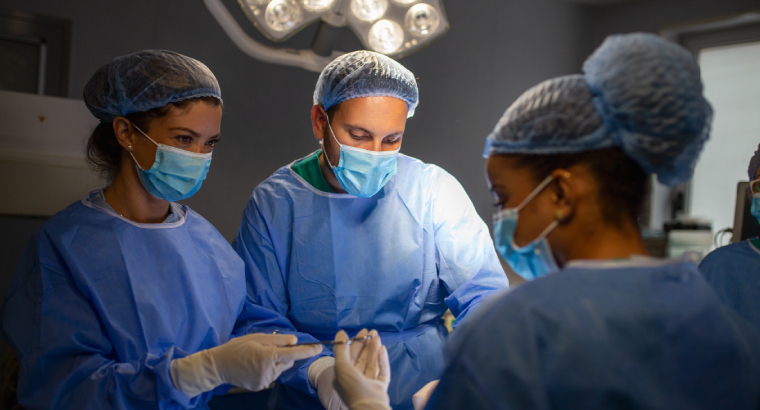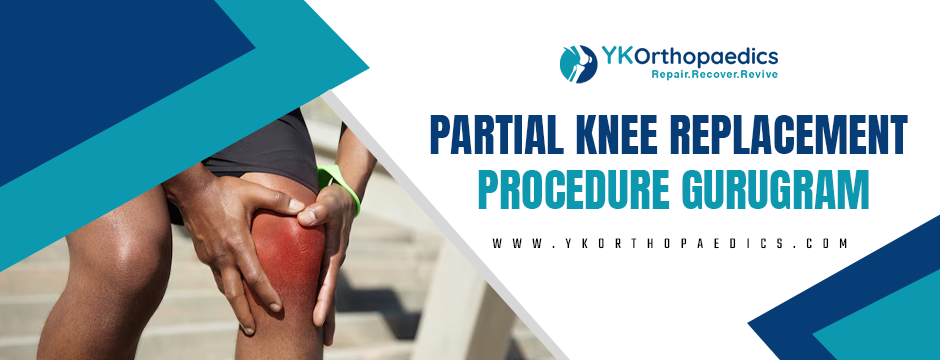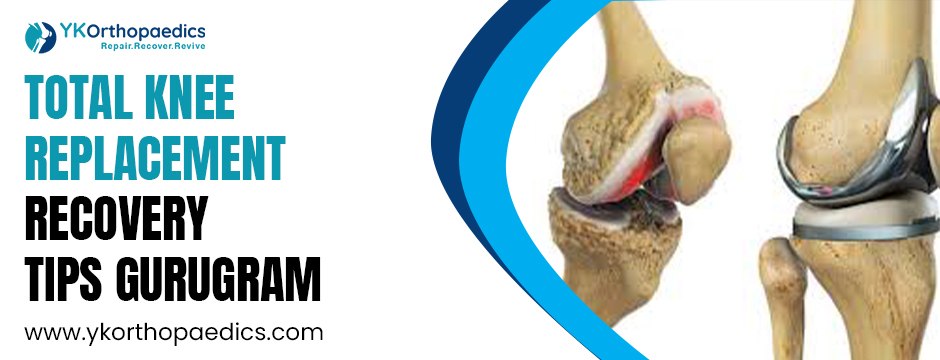
Understanding ACL Surgery- From Ligament Repair to Replacement
Synopsis
ACL surgery is one of the most common procedures for athletes and active individuals suffering knee injuries. Understanding when to opt for ACL ligament surgery and the techniques available, from ligament repair to complete ACL replacement, is crucial for anyone facing this decision. This blog dives into ACL tear and surgery essentials, including determining whether a patient needs repair or replacement. We’ll explore how the best ACL surgeons assess each case, considering factors like activity level, age, and the extent of the injury. Torn ACL surgery involves repairing or replacing the ligament and ensuring that the patient’s knee regains stability and function over the long term. Whether it’s a partial tear that requires minimal intervention or a complete rupture needing comprehensive treatment, this guide will provide valuable insights into what you can expect from ACL surgery. By the end of this blog, you’ll clearly understand the surgical options, recovery timelines, and how to choose the best ACL surgeon for your specific needs.
Table of Contents
- Introduction to ACL Surgery
- Types of ACL Ligament Surgery- Repair vs. Replacement
- Deciding When ACL Surgery is Needed
- What to Expect from Torn ACL Surgery
- Choosing the Best ACL Surgeon- Key Factors
- Understanding the Process of ACL Replacement
- Recovery and Rehabilitation After ACL Surgery
- YKOrthopaedics- Leading the Way in ACL Repair and Replacement
Introduction to ACL Surgery
The Anterior Cruciate Ligament (ACL) is a critical component of knee stability, and injuries to this ligament are particularly common in athletes and those who engage in high-impact activities. ACL surgery becomes necessary when the ligament is torn or severely damaged, compromising knee stability and function. Depending on the extent of the injury, the surgery may involve repairing the torn ligament or replacing it entirely with a graft. The choice between ACL ligament surgery and ACL replacement depends on several factors, including the patient’s age, activity level, and the specific nature of the tear. Understanding these factors is crucial for making an informed decision about the type of surgery needed.
Types of ACL Ligament Surgery- Repair vs. Replacement
ACL ligament surgery typically falls into two main categories- repair and replacement. Repair is often suitable for partial tears where the ligament is still attached and can be preserved. The surgeon sutures the torn ligament, allowing it to heal naturally. However, ACL replacement is necessary in cases of complete tears or when the ligament is too damaged to repair. Replacement involves using a graft from either the patient’s tissue (autograft) or a donor (allograft) to reconstruct the ligament. The severity of the injury guides the choice between repair and replacement, the patient’s recovery goals, and the surgeon’s expertise.
Deciding When ACL Surgery is Needed
Not every ACL injury requires surgery. Sometimes, non-surgical treatment options like physical therapy, bracing, and lifestyle modifications can be effective. However, for patients who experience instability, recurring knee injuries, or have a complete tear, ACL surgery is often recommended. The decision to proceed with ACL surgery is based on factors such as the patient’s age, level of physical activity, and the risk of further damage if left untreated. Athletes and active individuals are more likely to require surgery, as their knee function needs to be fully restored for optimal performance. Early intervention is key to preventing further complications and ensuring a smooth recovery.
What to Expect from Torn ACL Surgery
Torn ACL surgery is a well-established procedure with high success rates, but it requires careful planning and a clear understanding of the process. The surgery is typically performed arthroscopically, using small incisions and a camera to guide the surgeon. Whether the procedure involves ACL replacement or repair, the goal is to restore knee stability and allow the patient to return to regular activities. Recovery from torn ACL surgery varies depending on the type of surgery, but it generally takes 6-12 months before patients can resume high-impact sports. Physical therapy plays a crucial role in recovery, helping to rebuild strength, flexibility, and joint stability.
Choosing the Best ACL Surgeon- Key Factors
Selecting the best ACL surgeon is one of the most important decisions you’ll make in treatment. A skilled surgeon will assess your condition accurately and recommend the most suitable surgical approach. Experience, expertise in ACL surgery techniques, and a track record of successful outcomes are key factors to consider. The best ACL surgeons also prioritize personalized care, tailoring their approach to the patient’s needs and recovery goals. Additionally, choosing a surgeon who is well-versed in ACL repair and replacement ensures that you receive the right treatment for your specific injury, whether a straightforward tear or a more complex case.
Understanding the Process of ACL Replacement
ACL replacement involves using a graft to reconstruct the damaged ligament. This graft can be taken from the patient’s hamstring, patellar tendon, quadriceps tendon (autograft), or donor (allograft). The graft choice is influenced by factors such as the patient’s activity level, age, and previous knee surgeries. The procedure is minimally invasive, performed arthroscopically, and typically takes 1-2 hours. During the surgery, the surgeon removes the damaged ligament, prepares the knee joint, and positions the graft in place, securing it with screws or other fixation devices. ACL replacement offers a durable solution for patients with complete tears, providing long-term stability and reducing re-injury risk.
Recovery and Rehabilitation After ACL Surgery
Recovery from ACL surgery involves a structured rehabilitation program focused on restoring the knee’s strength, flexibility, and stability. The first few weeks after surgery are dedicated to managing pain and swelling, followed by gradually increasing mobility through physical therapy. Rehabilitation exercises are tailored to the patient’s recovery goals, progressing from basic range-of-motion exercises to more advanced strength and stability training. Full recovery can take anywhere from 6-12 months, depending on the type of surgery and the patient’s adherence to the rehabilitation program. Regular follow-up appointments with the surgeon are essential to monitor progress and address any issues that may arise during recovery.
YKOrthopaedics- Leading the Way in ACL Repair and Replacement
At YKOrthopaedics, we specialize in providing advanced solutions for ACL injuries, offering repair and replacement options tailored to each patient’s needs. Our team of highly experienced surgeons is dedicated to helping patients regain full knee function through personalized care plans and state-of-the-art techniques. Whether you require straightforward ACL ligament surgery or a more complex ACL replacement, we provide the expertise to ensure a successful outcome. With a focus on patient education, comprehensive care, and long-term recovery, YKOrthopaedics is your trusted partner in achieving optimal knee health.
Conclusion- Trust YKOrthopaedics for Expert ACL Surgery Care
Choosing the right provider for ACL surgery is crucial for ensuring a successful recovery and long-term knee health. YKOrthopaedics offers a comprehensive range of ACL surgery options, from ligament repair to complete ACL replacement. Our commitment to excellence and a patient-first approach ensures you receive the highest quality care at every step of your recovery journey. Whether you’re dealing with a torn ACL or exploring your options for knee stability, trust YKOrthopaedics to guide you towards a pain-free and active lifestyle.
FAQs
ACL ligament surgery can involve repairing a partially torn ligament or replacing a fully ruptured one. Repair is often suitable for partial tears where the ligament remains intact and can be sutured together. In contrast, ACL replacement is needed when the ligament is completely torn or too damaged for repair. In replacement surgery, a graft from either the patient’s tissue (autograft) or a donor (allograft) is used to reconstruct the ligament. The choice between repair and replacement depends on factors like the severity of the injury, the patient’s age, and activity level.
ACL surgery is typically recommended when the ligament is torn completely or when conservative treatments like physical therapy fail to restore knee stability. Symptoms like knee instability, frequent giving way, and difficulty performing everyday activities are signs that surgery may be needed. Additionally, active individuals, particularly athletes, are more likely to require ACL surgery to regain full knee function and prevent further injuries. Consulting with the best ACL surgeon can help determine whether surgery is necessary based on your condition, lifestyle, and recovery goals.
Recovery after torn ACL surgery typically ranges from 6-12 months, depending on the type of surgery (repair vs. replacement), the patient’s adherence to rehabilitation, and overall health. The initial recovery phase focuses on pain management and regaining range of motion. As healing progresses, strength training and stability exercises are gradually introduced. Full return to high-impact activities, like sports, may take up to a year. Regular follow-up visits with your surgeon are essential to monitor recovery progress and address potential complications.
When selecting the best ACL surgeon, consider factors such as experience, expertise in ACL surgery techniques, and a proven track record of successful outcomes. Choosing a surgeon skilled in ACL ligament repair and replacement is important, as this ensures they can recommend the most appropriate treatment for your injury. Personalized care, patient education, and clear communication are also key qualities to look for in a surgeon. A surgeon who takes the time to explain your options and creates a tailored recovery plan will help ensure the best possible outcome.
In some cases, ACL surgery can be avoided if the tear is partial or the patient’s activity level is low. Non-surgical treatments like physical therapy, bracing, and activity modification may restore function and stability. However, for those who experience ongoing knee instability or have a complete tear, surgery is often the best option to regain full knee function. High-performance athletes and active individuals are more likely to need surgery to prevent future injuries and ensure they can continue their activities without limitations.



